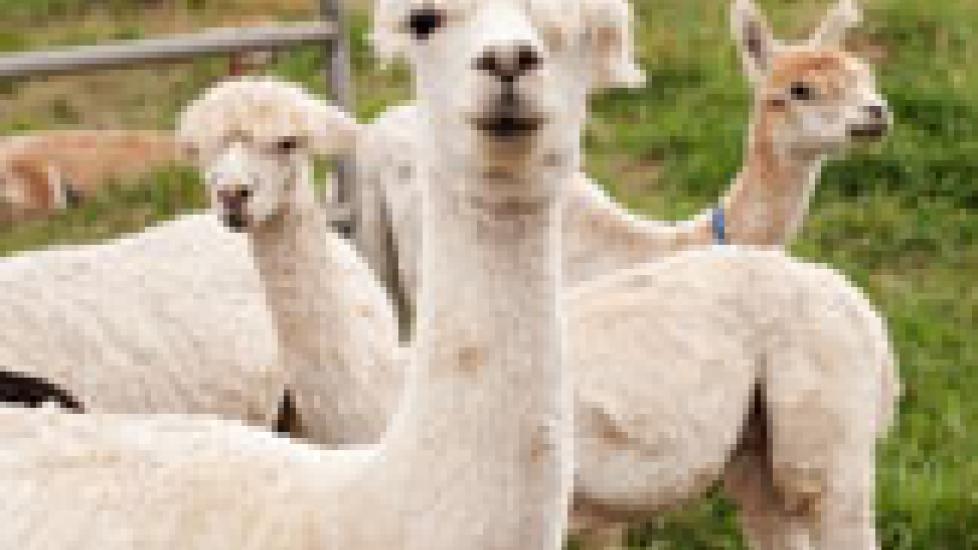Shearing Day on the Farm
Once a year, usually in early Spring, the alpacas around here seem a bit … naked. That’s because once a year, the alpacas around here take part in a major event: Shearing Day.
This day occurs at different times at different farms, some in March, some as late as June, depending on the availability of shearers and the schedule of the farm, but when this epic day happens, it is a flurry of fiber as winter coats are shorn and a new, far smaller-appearing animal appears from under all that fluff.
The primary economic value of alpacas in the U.S. is their fiber, which is what you call their coat (trust me, if you make the mistake of calling it “fur,” you’ll have to work very hard to gain an alpaca owner’s trust back again). If the fiber is high quality, it can be sold and spun, like sheep’s wool, into yarn that is some of the softest, silkiest stuff on earth. High quality fiber is often made into hats, scarves, sweaters, socks — you name it. It can also be mixed with sheep’s wool for a composite.
Alpaca fiber is evaluated by many things, including size (the diameter of the individual fiber in units of microns), crimp, strength, and sheen. As far as size, the smaller the diameter of the fiber, the finer and more luxurious it is. Eighteen to twenty-five microns is considered ideal.
Although the overall health of the animal makes up a portion of how good a fleece he can produce, genetics also plays a large role and alpaca breeders take fiber statistics of potential parents very seriously to produce cria (baby alpacas) with top quality fiber. So the question now comes up: How does one actually shear an alpaca?
A good alpaca shearer is quick and efficient. Shearing is stressful for the animal and often a farm will request all animals be done in one day or over a weekend, so a thorough but fast job is essential. Many alpaca shearers also shear sheep. In Maryland, I’ve met a few shearers who are Australian — they shear sheep down under and then come up to North America during our spring (their fall) to shear alpacas.
Most shearers will lay the alpaca down to shear them. Most alpacas are not very accommodating to a shearer’s requests, so many shearers have home-made devices that tie ropes around the animal’s legs. The animal is then carefully laid down on its side and immediately the clippers are going. The fiber comes off in long strips and someone gathers the fiber into a clean plastic bag. An alpaca can grow anywhere from six to ten pounds worth of fiber in a year. When one side is finished, the animal is flipped and the other side is shorn. An experienced shearer can completely shear an alpaca in five to ten minutes.
Once sheared, the animals look completely different, let me tell you. Usually, the shearer will leave a mop of fiber on top of the head — the “top knot.” Depending on how the fiber lays, this can give the animal quite a characteristic look. From a purely practical point of view, I love freshly sheared alpacas because I can actually SEE things like the jugular vein for blood draws. But can you imagine how different it must feel to have potentially ten pounds of fiber literally taken off your back?
A veterinarian’s services are usually not required during Shearing Day, but this day does sometimes turn into a bit of a social event and I am invited to a few every year. There’s usually lunch provided and good company and I can usually be counted on to supply hot coffee and donuts in the morning to get things started on the right foot — or hoof. Some large farms even advertise the day and invite the public to come see what it’s all about.
If you come across a shearing day in your county, I encourage you to attend. A bunch of near-naked alpacas is a sight you won’t soon forget!
Placing the leg ropes on an alpaca in preparation for shearing
The alpaca is restrained and shearing has begun

Dr. Ann O’Brien
Image: Candace Hartley / via Shutterstock
